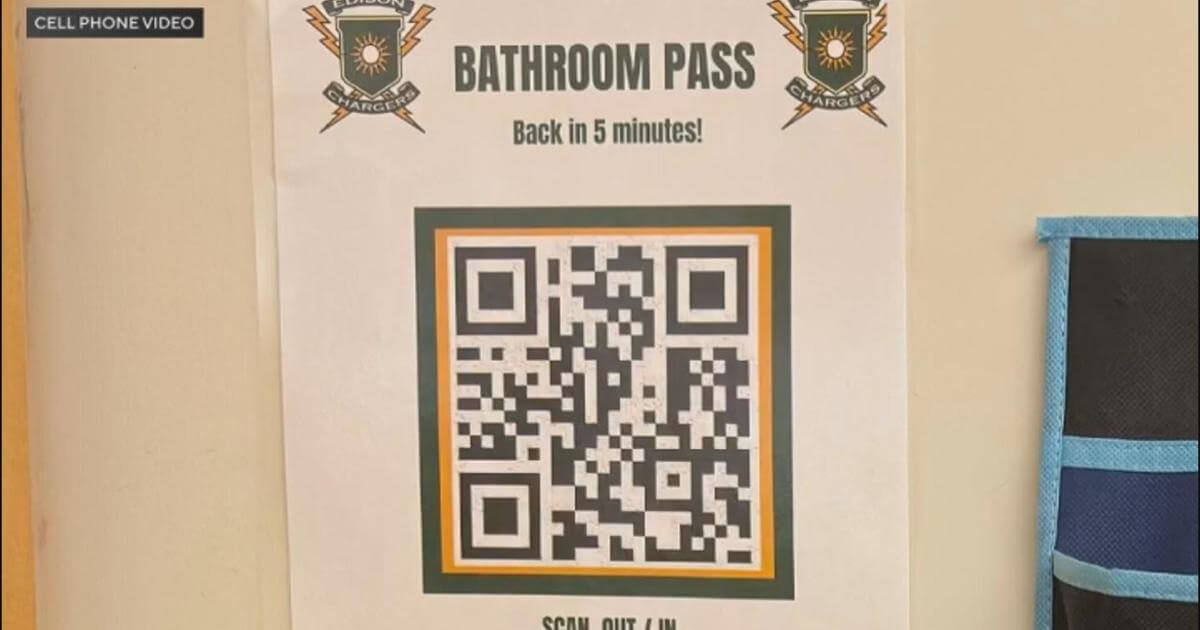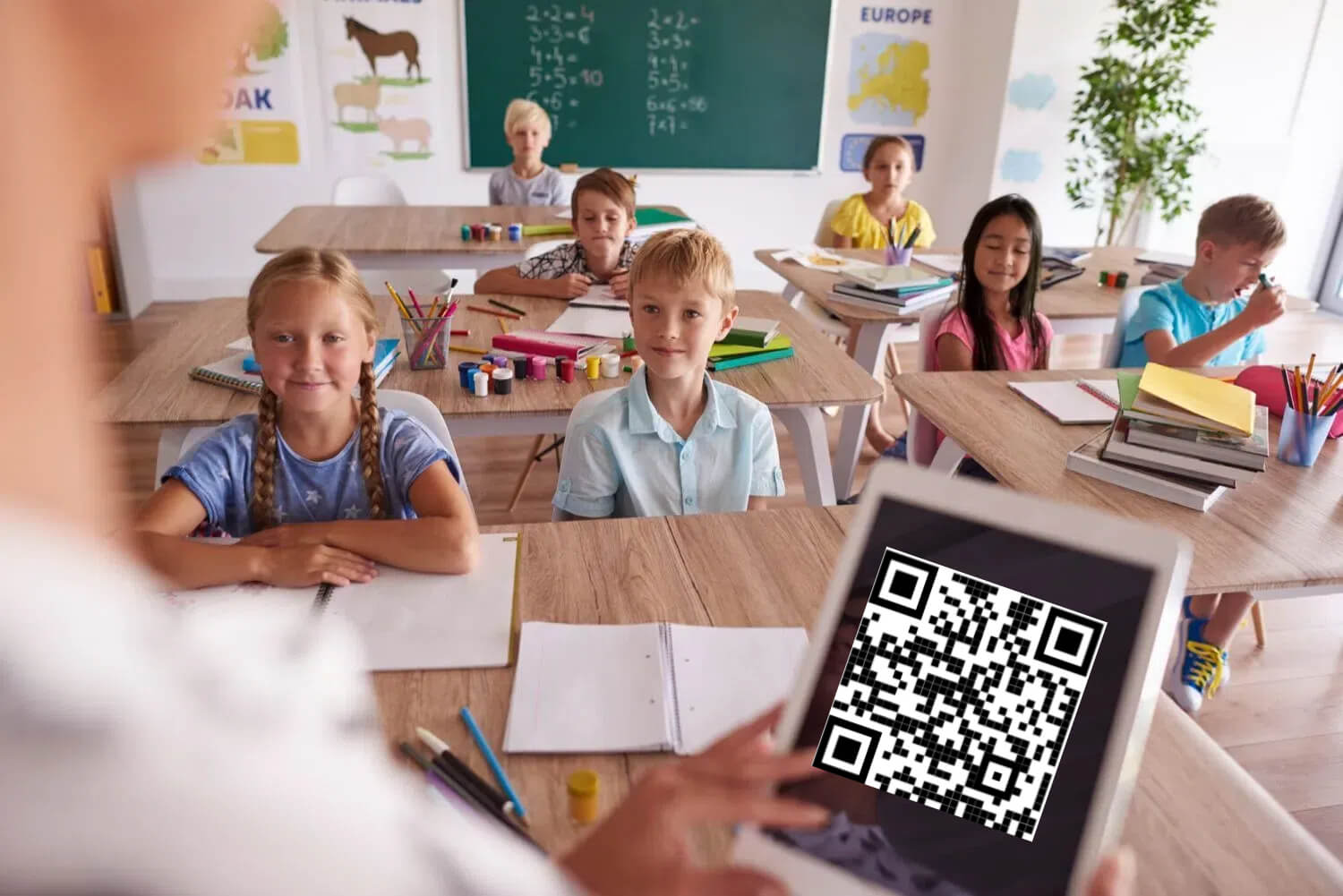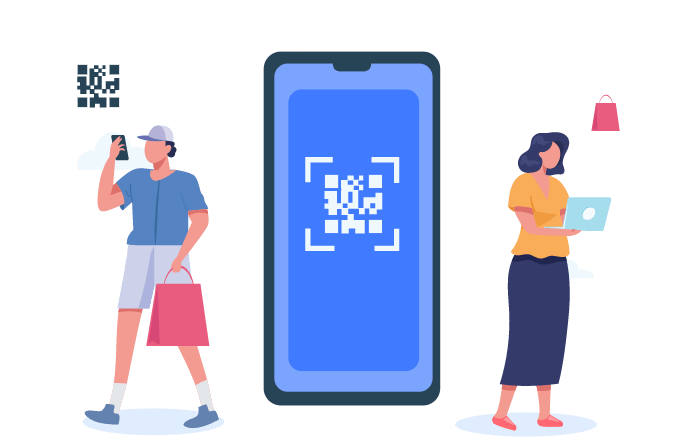In the digital age, technology has increasingly become a standard part of every aspect of education. One surprising area where this integration is taking place is in managing student bathroom usage. Recently, Orange County High School implemented a system requiring students to scan a QR code before using the bathroom, sparking both interest and debate.
This bathroom QR code approach aims to increase accountability and streamline the management of student movements, but how does it work, and can it provide a solution to long-standing issues?

Part 1. The Bathroom QR Code News that Started the Conversation
A recent story from CBS Los Angeles highlighted Orange County High School's new policy requiring students to scan a QR code before using the bathroom. The goal of this system was to help teachers and administrators keep better track of students' whereabouts, ensuring that students weren't abusing bathroom breaks to skip class or wander the halls. While some parents and students expressed concerns about privacy and the potential for over-monitoring, the school defended the policy as a way to ensure safety and reduce class disruptions.
This innovative approach brought up the broader question: Can QR codes really help schools manage bathroom use more effectively? Let's explore the concept, potential benefits, and how schools can implement it smoothly.

Part 2. How to Design a Bathroom QR Code System
How to effectively manage students' bathroom usage and tracking passes? Implementing QR codes to address this can be approached with the following design ideas and logic:
1. Unique Student Identification
Each student can have a personal QR code linked to their school ID or student number, serving as their unique identifier. When a student wants to use the bathroom, they scan their QR code, and the system automatically logs their identity.
We recommend using iMyFone QRShow to generate QR codes for students. As a professional QR code generator, it supports batch import and creation of codes, allowing you to view detailed scan information (including frequency and timestamps) from the dashboard. The process is also straightforward to use.
- Generate QR codes for your images, portfolios, Google photos, etc.
- Help you bulk QR codes more easily. Allow for better organization and management of various tasks or events.
- Customize your QR code with images, logos, frames, etc.
- Batch create QR codes , edit QR codes without creating a new one.
2. Real-Time Tracking and Recording
The QR code system can be integrated with the school's attendance or management system, and when a student scans their QR code, the system records:
Student ID: The unique identifier for each student.
Timestamp: When the student leaves and returns to the classroom.
Usage Limits: The system can automatically set daily or class-based limits on bathroom trips to prevent misuse.
Duration Monitoring: The system tracks the length of each absence, alerting teachers if there are unusual patterns (e.g., extended time away).
3. Teacher Control Panel
Teachers or administrators can use QRShow Dahsboard to view students' bathroom usage in real time. Through this platform, teachers can:
Check which students currently have bathroom passes.
Set special permissions or restrictions for individual students.
Review students' historical records, including frequency, duration, and time of use.
4. Security and Privacy
The student data contained in the QR code system should be encrypted to prevent unauthorized access and protect student privacy.
5. Process Flow
Step 1: The student requests permission from the teacher to use the bathroom.
Step 2: The student scans their QR code using a school device (such as a tablet or phone), and the system logs the time and student ID.
Step 3: Upon returning, the student scans the QR code again, and the system records their return time and calculates the total time away.
Step 4: Teachers can review the data in the system to monitor each student's departure and return times, helping manage the entire process.
This QR code-based system improves the efficiency of managing bathroom usage in schools, while reducing the risks of lost or misused paper passes. For more advanced management, features like smart data analysis and anomaly detection can also be added to the system.
Part 3. How QR Codes Work for Bathroom Passes
At its core, the idea of using QR codes for bathroom passes is simple. Each student has a unique QR code linked to their personal school ID or profile. When a student needs to use the bathroom, they scan their personalized QR code at a designated station (tablet, smartphone, or QR scanner) before leaving the classroom. This scan triggers several actions within the school's system:
Student identity is logged: The student's ID, linked with their QR code, is recorded.
Time and date stamps are recorded: The system logs when the student leaves the classroom, providing a timestamp for both teachers and administrators.
Bathroom break duration is tracked: When the student returns and scans the QR code again, the system calculates how long the break lasted.
This process offers real-time tracking of students' bathroom usage, allowing schools to maintain detailed records. Furthermore, schools can set rules around bathroom usage frequency and monitor for any patterns of abuse, such as frequent or excessively long breaks.
Part 4. Benefits of Implementing QR Codes for Bathroom Passes
1. Increased Accountability
QR codes create a digital record of each bathroom break, providing a clear picture of which students are leaving the classroom, when, and for how long. This data can help teachers identify potential issues, such as students who regularly take long or frequent bathroom breaks, and address them accordingly.
2. Minimized Classroom Disruption
With a digital QR system, teachers spend less time manually tracking students' bathroom trips. Students can quickly scan their codes without interrupting the flow of lessons, helping maintain classroom focus.
3. Better Safety Monitoring
Schools with safety concerns may benefit from a QR code system that ensures no students are lingering in the hallways unnecessarily. This system could also help in emergency situations by providing up-to-date records of where students were last located.
4. Data Collection for Policy Adjustments
The data collected through QR codes can help school administrations evaluate policies on bathroom use. For example, they could assess if certain times of the day see more frequent bathroom use and adjust rules accordingly. Schools can also identify students who may need support if bathroom breaks are becoming a frequent escape.

Part 5. Potential Challenges and Concerns of Bathroom Pass Classroom
While the use of QR codes seems like an efficient solution, it does come with certain concerns.
1. Privacy Issues
Some students and parents may feel uncomfortable with the idea of their movements being tracked so closely. While schools argue that this data is collected solely to manage classroom behavior and safety, it is essential to ensure that students' privacy is respected and that the data is handled responsibly.
2. Technical Barriers
Schools will need to ensure that the technology supporting the QR code system is reliable. Technical failures such as device malfunctions or network issues could disrupt the system, making it harder to implement smoothly without causing unnecessary delays.
3. Student Over-Monitoring
There is a fine line between maintaining order and over-monitoring students. Some critics argue that requiring students to scan a QR code each time they need to use the bathroom may feel restrictive, leading to student dissatisfaction. Balancing control and flexibility will be critical to a successful implementation.
Conclusion
The introduction of QR codes in managing bathroom passes, as seen in Orange County High School, represents a step toward more efficient and accountable student movement tracking. While there are legitimate concerns about privacy and the balance between order and freedom, this technology has the potential to streamline classroom management and improve school safety. As schools continue to innovate, the key to success will be in ensuring that these systems are implemented in a way that respects both students' needs and their privacy.









Rated Successfully!
You have already rated this article!